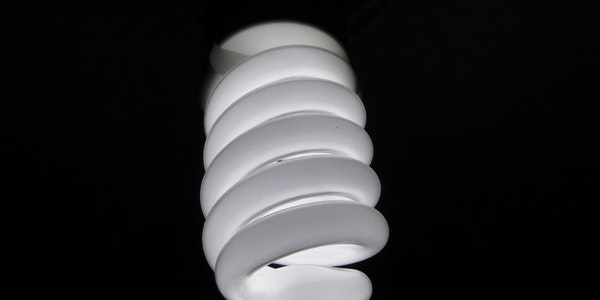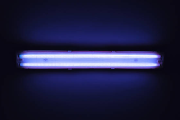A Brief Description of the Comparison of CFL & LED Lighting Principle
After more than a century of development in the world’s lighting industry, today, the most widely used lights are only compact fluorescent lamps (CFL) and light-emitting diode (LED) lamps.
CFL lamps and LED lamps are definitely more efficient than incandescent lamps, but the way they emit light is still different.
Energy-saving lamps pass electrical current through a tube containing a small amount of argon and mercury vapor, which generates invisible ultraviolet (UV), which stimulates the fluorescent coating (called phosphor) inside the tube, which generates a chemical reaction and emits visible light.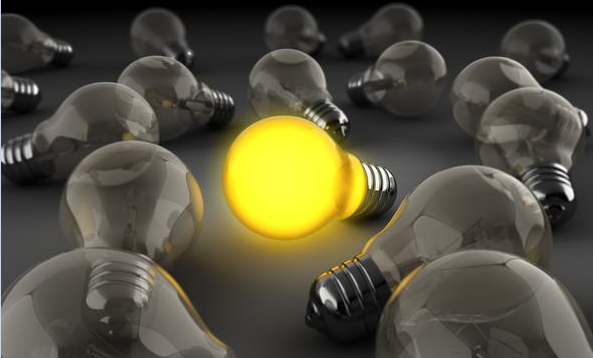
The LED light-emitting diode is a solid-state semiconductor device that can convert electrical energy into visible light, and it can directly convert electricity into light. The heart of the LED is a semiconductor chip, one end of the chip is attached to a bracket, one end is a negative comparator, and the other end is connected to a positive comparator of the power supply, so that the entire chip is encapsulated by epoxy resin. To understand the light-emitting principle of LED lights, you must be familiar with its hard conditions. First of all, the production of LED lights is mainly III-IV compounds, such as gallium arsenide, gallium phosphide, phosphorous gallium arsenide and other compounds, the core of which is the PN junction.
There are a large number of positively charged holes and negatively charged ionization impurities inside the P-type semiconductor. Due to the action of the electric field, the ionization impurities are fixed and the holes are movable. However, there are many negative electrons and fixed positive ions inside the N-type semiconductor. Due to the effect of the electric field, the positive ions are fixed and the negative electrons are movable. If a positive voltage is applied to the PN junction, the P-type is connected to the positive side and the N-type side is connected to the negative side. The current flow direction is from P to N, and the holes and free electrons move to the interface, narrowing the space charge region. , The current will pass smoothly. If a reverse voltage is applied to the PN junction, the holes and free electrons are far away from the interface, so that the space charge region is widened, and the current will not pass.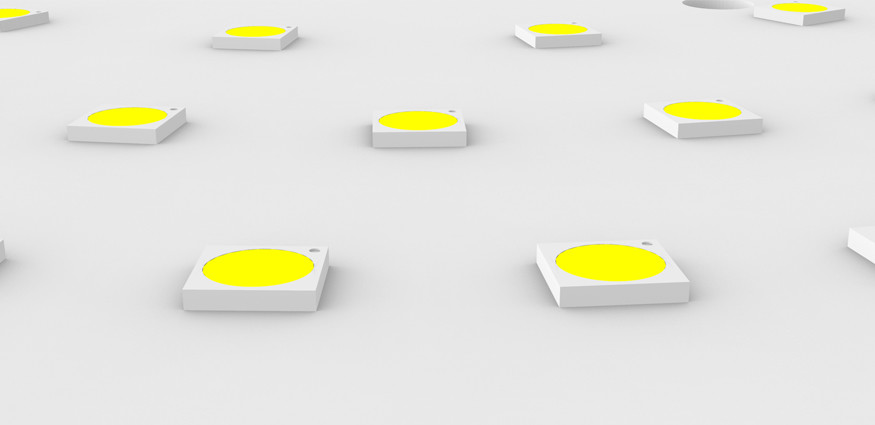
Therefore, when the forward voltage is applied to the two semiconductor chips, the PN junction of certain group of compound semiconductor materials will inject minority carriers and majority carriers, and the excess energy will be released in the form of light during recombination, so as to realize the energy transfer. Conversion of light energy. If a reverse voltage is applied, it is difficult for minority carriers to be injected, so there is no excess energy released when no carriers are recombined, so that the conversion of electric energy to light energy cannot be realized. This is the light-emitting principle of LED lights.
Nowadays, CFL lights in a large number of facilities around the world are gradually being replaced by LED lights, but we often don’t know how to choose because of too many options. Don’t worry, LED lights have a very wide range of uses and can be applied to almost any occasion. Please continue reading this article for more details.
More lumen per watt
Watt refers to a unit that measures how much energy is produced by using a unit of electrical energy. For lamps, this refers to the unit that converts electrical energy into light energy. However, lumens refers to the amount of light that enters the human eye.
That is to say, Watt refers to how much electricity is used, and lumens is equal to brightness.
Compared with similar CFL products, the highlight of LED lies in its excellent energy efficiency, which requires less wattage to produce the same intensity of light, and the brightness of the same wattage LED lamp is several times higher than that of CFL.
A 20-watt LED lamp has an efficacy of 80 lumens per watt, which can achieve a luminous flux of 1600 lumens. To produce the same level of brightness, the power of the CFL lamp needs to be at least 50 watts. From this, it is not difficult to see that LED lamps can consume less energy than CFL lamps and reduce carbon emissions when reaching the same illuminance.
Longer lifespan up to 80,000 Hours
The theoretical life of LED is 100,000 hours, but this is only the highest value under ideal conditions. In fact, the life of LED lights has a lot to do with current, brightness, materials, etc. When the LED lamp is used for more than 20,000 hours, there will be light decay, which means that its brightness is not as bright as the original.
The amount of time that the LED light source operates from the initial value until the luminous flux decays to 70%. For some low-power LEDs used as indicator lights, it can reach more than 100,000 hours. But for high-power LED lights, the service life is far from 100,000 hours. And in actual use, when the LED light exceeds 50,000 hours, the brightness is still 70% of the initial brightness.
Therefore, the LED lamp can be used for several years, mainly depends on the environment in which it is used, the quality of the electronic components and other factors. The use time of LED lights is like a bucket principle, which is determined by the part with the shortest lifespan. In other words, if an electronic component is damaged the next day of use, it will only last for two days. Of course, this is just an accident, not the topic of our article.
Durability
Why is the LED bulb not broken? It changes the principle of the tungsten filament light emission of the incandescent lamp and the three-primary color powder light emission of the energy-saving lamp, and electroluminescence is adopted.
Why LED bulbs are not broken? According to analysis, LED has obvious characteristics, long life, high luminous efficiency, no radiation and low power consumption. Almost all the spectrum of LED is concentrated in the visible light frequency band, and its luminous efficiency can exceed 150lm/W (2010).
Comparing LED with ordinary incandescent lamp, spiral energy-saving lamp and T5 tri-color fluorescent lamp, the results show that: ordinary incandescent lamp has a luminous efficiency of 12lm/W and a lifespan of less than 2000 hours, and a spiral energy-saving lamp has a luminous efficiency of 60lm/W, which is less than For 8000 hours, the T5 fluorescent lamp is 96lm/W and the life span is about 10,000 hours, while the white light LED with a diameter of 5 mm can theoretically exceed 150lm/W, and the life span can be greater than 100,000 hours.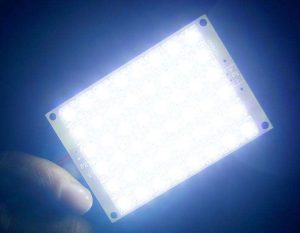
Why doesn’t the LED bulb break? Someone also predicts that the upper limit of LED life will be infinite in the future. However, the working principle of LED lights makes the heat dissipation problem very prominent in the high-power LED lighting industry. Many LED lighting solutions do not pay enough attention to heat dissipation, or have limited technical levels. Therefore, the current mass-produced high-power LED lights generally have actual service life. Far inferior to the theoretical value, and the cost performance is lower than the embarrassing situation of traditional lamps.
In order to improve the service life of LED lamps and truly be suitable for commercial mass production, the LED lighting industry is stepping up the development of new thermal conductive materials, such as thermal conductive plastics, independently or in cooperation with professional thermal conductive material suppliers.
Why are LED lights so durable? In the general description, LEDs can be used for more than 50,000 hours, and some manufacturers advertise that their LEDs can operate for about 100,000 hours. The main problem in this regard is that the LED is not simply no longer operating, and its rated service life cannot be calculated by the measurement method of traditional lamps.
In fact, when testing the lifespan of an LED, no one will stay around waiting for it to stop working. However, there are other ways to measure the lifespan of LEDs. The reason why the LED is durable is that it does not cause the problem of filament fusing. The LED will not stop functioning directly, but it will gradually degrade over time.
Predictions indicate that high-quality LEDs can maintain more than 70% of the initial lamp brightness after 50,000 hours of continuous operation. Assuming that the LED has reached its rated lifespan, it may actually still emit light, but the light will be dim.
In order to extend the service life of the LED, it is necessary to reduce or completely dissipate the heat generated by the LED chip. Thermal energy is the main reason why LEDs stop functioning. The lifespan of LEDs is related to the chips and driving power of the LEDs. Why LED lights are so durable? The lifespan of LED lights has a certain relationship with the quality of the power board. If the quality of the power board is not good, the life span is very different from the theoretical life. It is recommended to buy a good power board.
Almost no impact on the environment and human health
We all know that CFL lamps can excite infrared and ultraviolet rays, both of which can damage eyes and skin. The LED lamp does not produce these two kinds of rays, so it is very safe for the human body. In addition, LED lights in homes, factory workshops, parking lots, gas stations and other facilities usually save 70%~80% of electricity than CFL lights and incandescent lights, so the total kW/hr consumption will be greatly reduced, thereby greatly reducing CO2 emission. It is a real green energy-saving lighting.
As mentioned earlier, CFL contains a small amount of mercury vapor, which is necessary for them to emit light. We all know that mercury is a highly toxic heavy metal and will not automatically degrade in nature. If it is thrown directly into In the garbage dump, it will cause huge pollution to the soil and water. This makes recycling CFL lamps a worldwide problem. Even more frightening is that if the CFL lamp breaks at home, the mercury vapor inside may cause harm to your family.
Because LED lights have advantages that CFL can’t match, they are more expensive than CFL lights. But in the long run, you can ensure a return on investment by saving power consumption and reducing the number of bulb replacements.

